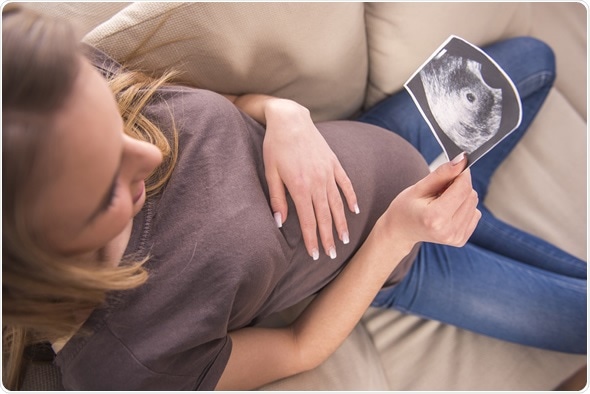Pregnancy is associated with a plethora of hormonal, immunological, vascular and metabolic changes.
These may influence the skin and the hair, as well as other organs, in various ways. Excessive hair growth, also known as hirsutism, is observed in many pregnant women, especially towards the end of the pregnancy.
Physicians may sometimes misinterpret excess hair growth and other physiological skin changes in pregnancy as pathologic changes.
For this reason it is pivotal to identify skin manifestations that are unique to pregnancy in order to avoid unwarranted testing and potential stress for the pregnant woman.
As many physiological changes resolve postpartum, adequate reassurance and expectant management are to be preferred in practically all cases.

Image Copyright: VGstockstudio / Shutterstock
Stages of Excessive Hair Growth in Pregnancy
Hair covers the body almost completely, with the exception of the palms of the hands and the soles of the feet.
The term “hirsutism” has Latin roots, and is used to describe the excessive growth of stiff hair, or hairiness, particularly in women or children.
A mild to moderate hirsutism is often seen during pregnancy, but these changes usually resolve after delivery.
The increased mean percentage of anagen growing hairs is responsible for this. Anagen hairs are those which are in the vigorous growth phase, which is due to estrogen stimulation.
Estrogen prolongs this anagen phase and slows down the conversion of hair from the anagen to the telogen (or resting) phase.
This is specific for the second half of the pregnancy, and may be reinforced by androgen stimulation as well.
After parturition occurs, the hair follicles in which the anagen phase has been prolonged swiftly enter telogen phase. As a result, increased hair shedding starts approximately 70 to 80 days postpartum.
This event is known as telogen effluvium, and is more pronounced in the frontal and temporal regions of the head. In some cases it may be generalized.
A complete recovery of hair growth occurs spontaneously, usually within 3-12 months. Despite this, the regrown hair may not be as copious as it was prior to the pregnancy.
In rare instances the onset of male-pattern baldness may be observed, most notably in women who have a tendency towards androgenetic alopecia.
A Visual Scoring System for Hirsutism in Pregnancy
Screening pregnant women for hirsutism has traditionally consisted of a full body examination, which was considered to be an invasion of privacy by many women.
Some researchers and practitioners have therefore attempted to correlate hair growth in a particular region of the body with the probable extent of total body hirsutism, with varying degrees of success.
Hair growth in pregnancy can be assessed employing the modified Ferriman and Gallwey (mFG) scoring system. This is sometimes coupled with a total testosterone level determination.
Research has shown that the body areas that are worst affected by hirsutism (defined as a mFG score bigger than 5) include the upper lip, lower abdomen, lower back and thighs.
In 2016 a simplified mFG scoring system (sFG) was developed. With this scale, a cutoff value of ≥3 is used to adequately define hirsutism.
Using this system, pregnant women with excessive hair growth are correctly distinguished from non-hirsute women with a precision of 95.2%.
The sensitivity (true positive rate) of this system is 96.8%, and the specificity (true negative rate) for the detection of hirsutism is 94.3%.
References
- http://www.ncbi.nlm.nih.gov/pubmed/26616440
- http://www.ncbi.nlm.nih.gov/pubmed/4058832
- http://www.ncbi.nlm.nih.gov/pubmed/16487888
- http://www.ncbi.nlm.nih.gov/pmc/articles/PMC4311336/
- http://www.ncbi.nlm.nih.gov/pmc/articles/PMC3444563/
- http://www.ncbi.nlm.nih.gov/pmc/articles/PMC3205229/
Further Reading